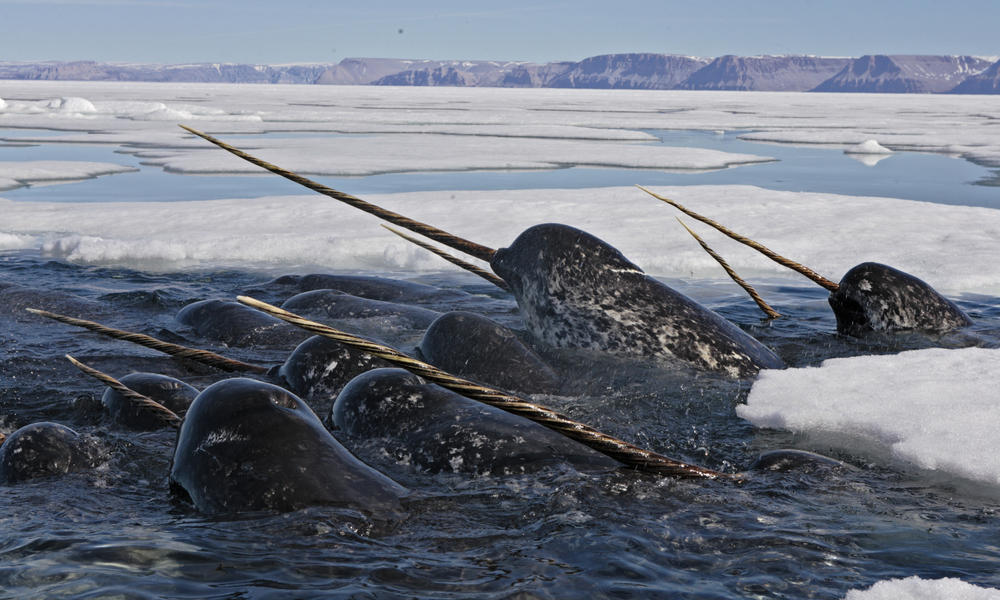These ‘fire snails’ only live in one place around the world: a mountain range in Malaysia

- 3.1KShares
- Facebook3.1K
- Twitter8
- LinkedIn8
- Email9
- WhatsApp24
Imagine, for a moment, that your very rich, very spoilt boss said that he wanted to see a real life narwhal. Yes, that’s a real animal.

You’re in charge of arranging his trip, but where should you send him off to? There are not many places where you can find narwhals (probably not in Penang, btw), but your boss might find some in the oceans near the Arctic.
Like the narwhal, some animals and plants can only be found in certain places, and this phenomenon is called endemism. Malaysia, being one of the most megadiverse countries in the world, have plenty of endemic species, and today we’ll be looking at one of these: the so called ‘fire snail’.
And while a lot of endemic species can be found within a continent or a country…
The fire snail can only be found within a 100 km radius from Cameron Highlands
Meet the fire snail:

Oh wait, that’s actually a Pokémon. Here’s the real thing:

Known scientifically as Platymma tweediei, it’s also known as the fire snail due to the color of its foot. It is also said to be the largest land snail species you can find naturally on Peninsular Malaysia, having shells that can grow up to 7 cm in diameter, with bodies big enough to make a grown man scream.
Apparently, the snail was first reported in 1939, from the Telom Valley in Cameron Highlands. Since then, it has been reported in Temenggor (80 kms north from Telom) and Kelantan (100 kms north-northeast from Telom), and… that’s it. Reports said that these snails were uncommon even in their habitat, and based on where they have been sighted, you have the best chance of finding them in a 100 kilometer radius around Cameron Highlands.

As if that doesn’t make them hard enough to find already, they can only live in very cool, humid environments. This means that you can only find them in cloud forests within the radius, which are literally forests high enough that clouds can form there, or approximately 1000 meters above sea level. That’s a very specific place for these snails to live. And maybe because of that…
Changes to their habitat might endanger these snails
Truth be told, we weren’t able to find out much about these fire snails. Most of our knowledge of it comes from a scientific paper and snail-trading websites, and they weren’t listed in the IUCN database, which keeps track of how threatened a species is. They’re pretty popular among snail lovers, though.
I’m not into #snails but these guys looks bright! (don’t want to admit they r pretty 😆) This guy is called Platymma Tweediei or Fire snail. Not something you can put in #fishtank. Also heard they are very heard to keep. #AquariumTalks #Pets #fishkeepers pic.twitter.com/6FfehuK09d
— Aquarium Talks (@AquariumTalks) March 12, 2020
However, things may not look good for these snails. As we’ve discussed in the previous header, the fire snails can only be found in a very specific kind of forest with a very specific set of conditions, so if anything is to change those conditions, these snails may soon die out. Less than 1% of our forests are cloud forests, and as of 2014, Malaysia have lost about a quarter of those to logging, agriculture and tourism.
Cameron Highlands, where these snails are found, is among the places hit hard by these industries. Within the 3 decades from 1947 to 1997, Cameron already lost a third of its forests, and the number have probably increased since then.

The clearing of these forests also created a sort of ‘heat island’ effect, where the difference in temperature and humidity between forested and non-forested areas (which can reach 2-8°C and 10-20% humidity) can cause snails in affected areas to die out. Being snails, they can’t just move away to a better habitat in time to save themselves from these changes.
But even if there’s nothing threatening their habitats…
The fire snails are also threatened by snail collectors

It’s no surprise that some people would want to get their hands on such a beautiful snail. We’ve previously written about people smuggling out a rare blue spider from Sarawak before for foreign tarantula enthusiasts, and apparently this snail has also suffered the same fate. A paper from 2014 had found that online interest in the fire snail amongst hobbyists had increased twenty-fold since 2008, which is just six years apart.
While there had been no mentions of the snail online before 2007, the paper had found that the first mention of the species online had included an anecdote about the snail already being in the wildlife trade for several years already. The main markets had been found to be in Europe, UK and Malaysia back then. But how did all these happen without so much of a peep about it in the news? Well, looking at snail forums online, apparently it’s not that hard to do so and get away with it.

However, here’s the pinch: while it’s relatively easy to smuggle out one or two spiders and have them reproduce to make new spiders to keep up with the demand outside of Malaysia, these snails are a different story. Like we’ve mentioned in the previous header, fire snails are quite delicate and can only survive within a certain temperature and humidity range.
Wildlife smugglers with no experience will find it very hard to keep these snails alive, let alone have them breed and produce more snails. To sustain the trade, smugglers will have to keep on catching and smuggling new snails. While there seems to be a problem…
More needs to be known about the fire snail before we make any conclusions

As we’ve previously mentioned, for such a striking-looking snail holding the title of the biggest land snail endemic to Peninsular Malaysia, there is a surprising lack of literature about it. There’s not much about it being said outside of forums, and some of the papers we found only mentioned it in passing. Maybe it’s because not many people are aware that these snails exist, due to it only being found in a spot that’s barely a dot on the world map.
Or maybe people just don’t care enough about snails. Speaking of which… here’s a little pop quiz. In 2015, the world’s smallest snail species was discovered in Sabah. Named Acmella nana, they’re very smol. But how smol?
Anyhoo, regardless of why these snails didn’t get the attention that they deserve, with their habitat being in danger and the snails themselves being traded, more needs to be known about these snails before any action can be taken. How many are there? How many are left? Is it possible to save them? Do they need saving in the first place? Will we get to see one in the flesh someday?
We don’t know the answers to these questions, but hopefully someone would be interested enough to answer these questions in their paper soon. Or drop some serious grants their way.
[btw, if you didn’t click that link about the smallest snail, they average 0.7 mm, which is pretty small]
- 3.1KShares
- Facebook3.1K
- Twitter8
- LinkedIn8
- Email9
- WhatsApp24



